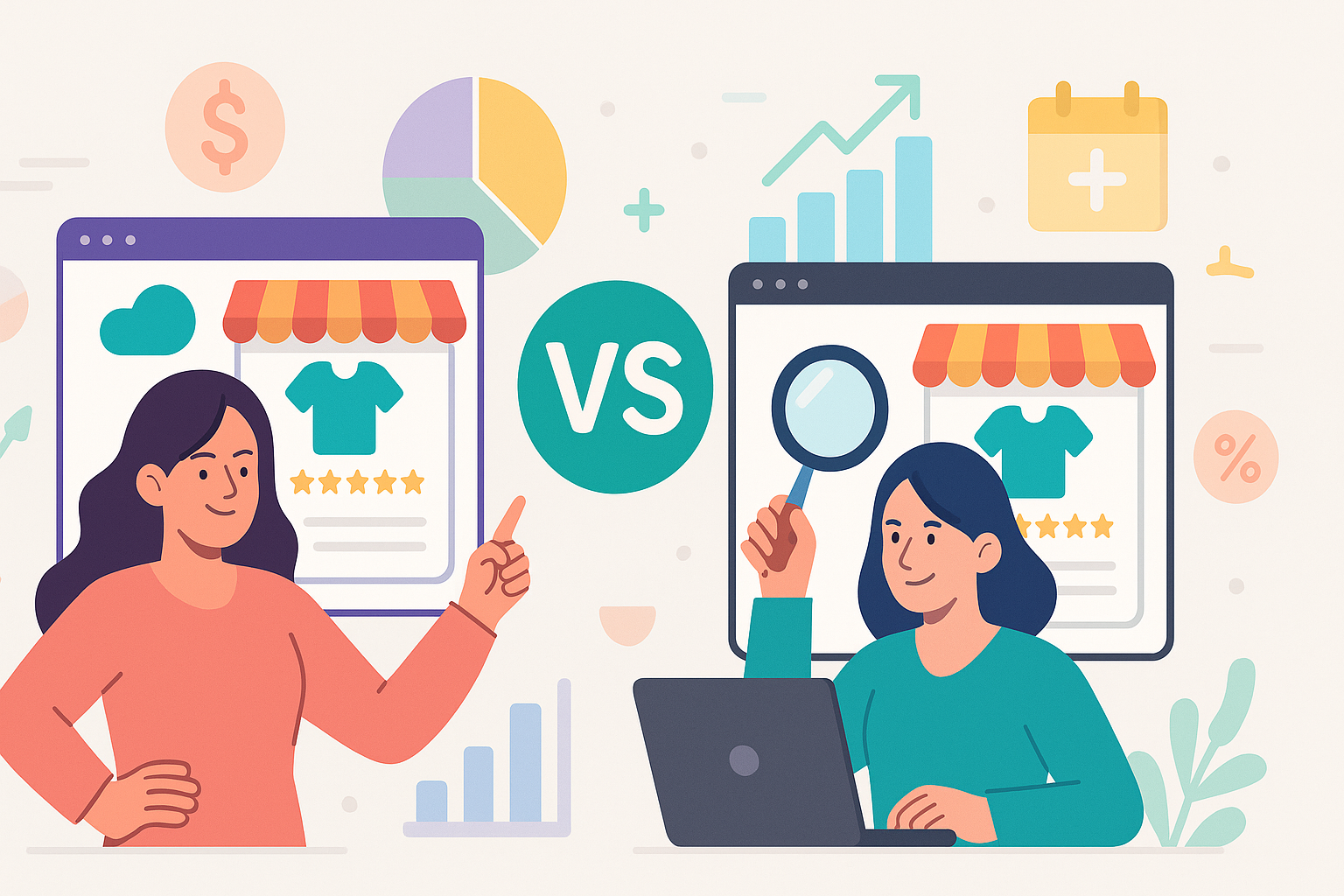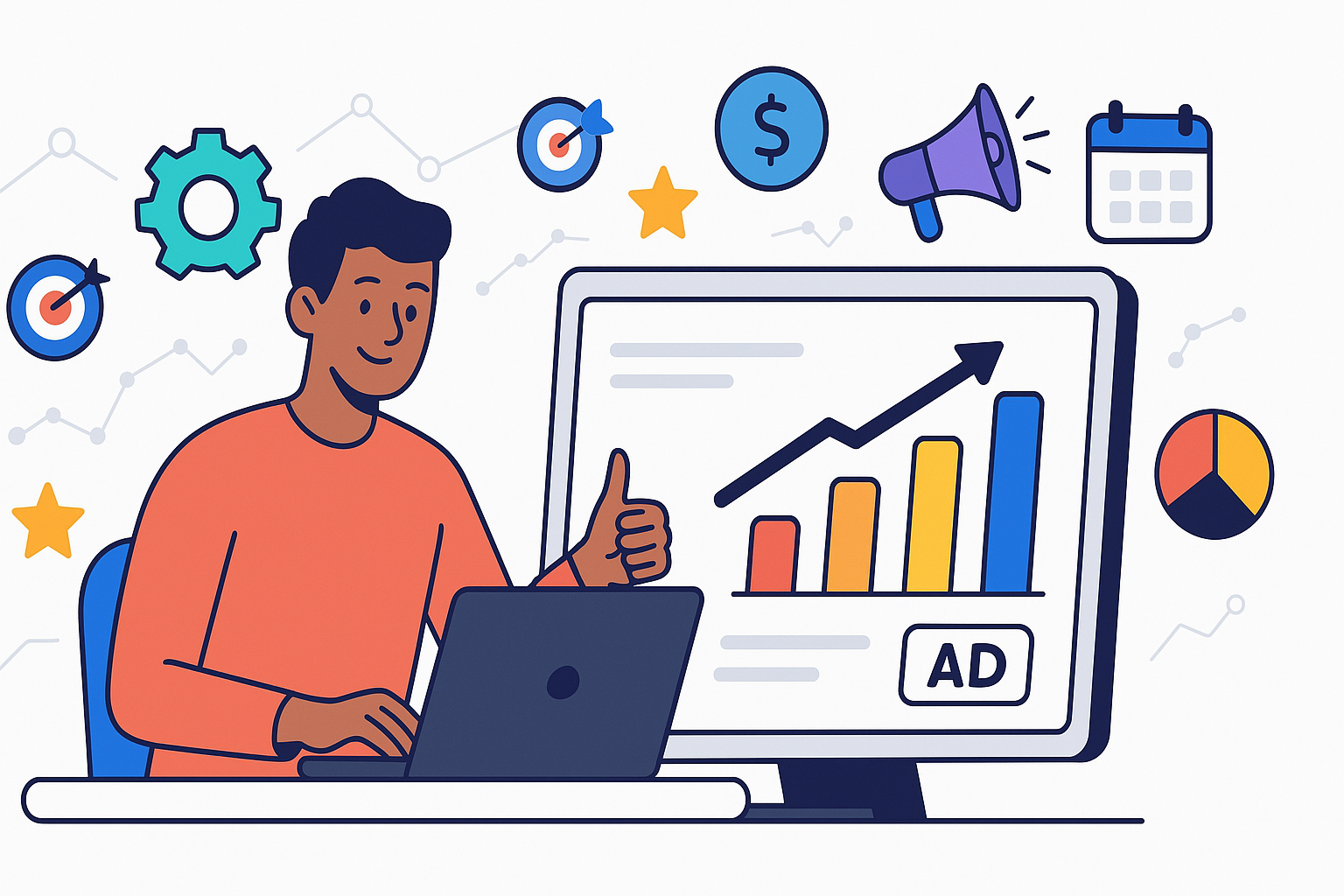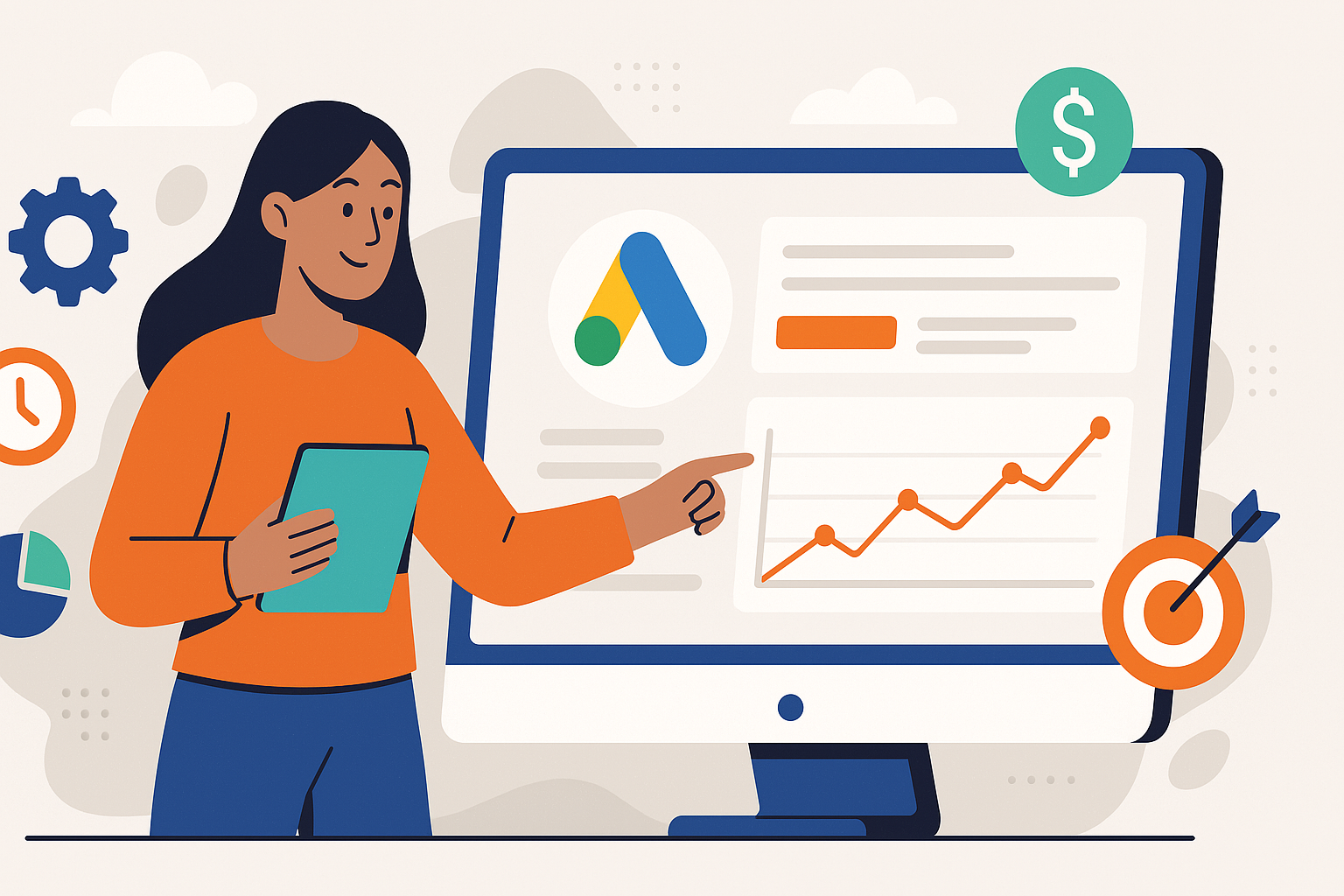Decoding Web Design Cost: What You Really Need to Budget
by Francisco Kraefft on 24 Feb, 2025
Investing in a professional website is crucial for business growth in today's digital landscape. It's your virtual storefront, your lead generation engine, and often, the first impression you make. But one question looms large for many businesses: What is the actual web design cost? The answer isn't a simple number; it's a spectrum influenced by your specific needs, goals, and the scope of your project. Understanding the variables involved is the first step towards making an informed investment. This exploration will demystify website pricing, helping you navigate the options and allocate your budget effectively for a site that delivers tangible results.
Understanding Web Design Pricing Models: How Agencies Charge
Before diving into specific cost factors, it's essential to understand how agencies typically structure their pricing. Knowing these models helps you compare quotes and choose the approach that best suits your project and budget predictability.
1. Hourly Rate:
- How it works: You pay for the actual time spent on your project, usually tracked meticulously by the agency. Rates vary significantly based on location, agency size, and expertise.
- Pros: Offers flexibility, especially if the scope is unclear or likely to evolve. You only pay for the work done.
- Cons: Budget uncertainty. Costs can escalate if the project scope expands or inefficiencies occur. Requires trust and clear communication regarding time tracking.
- Best for: Ongoing maintenance, smaller projects, or projects where the scope is difficult to define upfront.
2. Fixed Project Price:
- How it works: The agency provides a single, upfront price for the entire project based on a clearly defined scope of work. This is arguably the most common model for standard website builds.
- Pros: Budget certainty. You know the total cost before starting, assuming the scope doesn't change significantly.
- Cons: Requires a very detailed scope document upfront. Any changes or additions outside the original scope (scope creep) will usually incur extra charges. Can sometimes be padded slightly to account for unforeseen issues.
- Best for: Projects with well-defined requirements and deliverables, like a standard brochure website or a specific landing page campaign.
3. Value-Based Pricing:
- How it works: Pricing is based on the perceived or measurable value the website is expected to bring to your business (e.g., increased leads, sales, improved efficiency). This requires a deep understanding of your business goals.
- Pros: Focuses on ROI and business outcomes, not just hours worked. Aligns agency incentives with client success.
- Cons: Can be more complex to determine and agree upon. May result in higher initial costs compared to other models, reflecting the potential upside.
- Best for: Businesses focused on performance and results, where the website's impact on revenue or key metrics can be estimated or tracked. Often used in conjunction with performance marketing services.
4. Monthly Retainer:
- How it works: You pay a fixed monthly fee for a predetermined set of services or a block of hours. This is common for ongoing work like maintenance, SEO, content updates, or continuous improvement.
- Pros: Predictable monthly costs, ensures ongoing support and optimization, fosters a long-term partnership.
- Cons: You pay the fee regardless of whether you fully utilize the allocated hours or services each month (though some agencies offer rollovers).
- Best for: Businesses needing continuous website support, updates, digital marketing integration, and long-term growth strategies.
At iVirtual, we often utilize a combination, typically starting with a fixed project price for the initial build based on a detailed discovery process, and then offering retainer options for ongoing optimization and performance marketing, ensuring your website continues to deliver value long after launch. Understanding these models allows you to ask the right questions when evaluating proposals.
Key Factors Driving Your Web Design Cost
The specific features and requirements of your website are the primary drivers of its cost. Think of it like building a house – a simple cabin costs less than a sprawling mansion with custom features. Here are the core components influencing your web design investment:
-
Project Scope & Complexity:
- Number of Pages: A 5-page brochure site costs significantly less than a 50-page site with diverse content types.
- Complexity: Features like intricate navigation, user membership areas, complex forms, forums, or sophisticated animations increase development time and cost.
-
Design Customization:
- Template-Based: Using a pre-designed template is the most cost-effective option but offers limited customization.
- Custom Design: A unique design tailored specifically to your brand requires significant design and development effort, involving wireframing, mockups, and bespoke coding. This results in a higher cost but provides a distinct brand identity and user experience.
-
Functionality & Features:
- Basic Features: Contact forms, maps, basic image galleries.
- Advanced Features: E-commerce capabilities (shopping carts, payment gateways), booking systems, user accounts, integrations with third-party software (CRM, ERP), advanced search filters, multi-language support. Each added feature requires specific expertise and development time.
-
E-commerce Integration:
- Building an online store is inherently more complex than a standard informational site. Costs depend on the number of products, payment gateway integration, inventory management needs, shipping configurations, security requirements (PCI compliance), and desired sales features.
-
Content Creation & Migration:
- Who provides content? If you provide all text, images, and videos, ready for the web, costs are lower. If the agency needs to create content (copywriting, photography, videography) or migrate large amounts of content from an old site, this adds to the scope and cost.
- Content Optimization: SEO-focused copywriting and image optimization require specific skills and add value, influencing the price.
-
Platform Choice (CMS):
- WordPress: Highly popular, flexible, and generally cost-effective due to a vast ecosystem of themes and plugins. Customization can still be complex.
- Shopify/BigCommerce: Excellent for e-commerce, often subscription-based with transaction fees. Design customization might be more limited than WordPress without expert developers.
- Custom Platform: Building from scratch offers maximum flexibility but is significantly more expensive and time-consuming.
- Other CMS (Drupal, Joomla): Have their own learning curves and development costs.
-
Responsive Design & Mobile Optimization:
- Today, responsive design (adapting seamlessly to all screen sizes – desktops, tablets, mobiles) is non-negotiable. Ensuring a flawless experience on all devices is standard but still requires careful design and testing, contributing to the overall effort.
-
- Building a site with SEO best practices from the start (clean code, fast loading speed, proper site structure, schema markup, initial keyword optimization) is crucial for visibility. While ongoing SEO is separate, a well-built foundation impacts the initial cost and long-term success.
Carefully evaluating your must-haves versus nice-to-haves in these areas will help you define a realistic scope and understand the corresponding web design cost implications.
Ballpark Figures: Typical Web Design Cost Ranges
While every project is unique, providing some general cost ranges can help set expectations. Remember, these are estimates and can vary widely based on the factors discussed previously, the agency's location, experience, and overhead.
1. Basic Website / Brochure Site (Approx. $2,000 - $7,000):
- What it includes: Typically 5-10 pages, professional design (often based on a customized premium template), basic features (contact form, map), responsive design, basic SEO setup, content management system (like WordPress).
- Ideal for: Startups, small businesses, professionals needing a simple online presence to showcase services and contact information.
2. Small Business Website (Approx. $7,000 - $15,000):
- What it includes: 10-25 pages, more customization in design, enhanced features (blog integration, more complex forms, basic portfolio/gallery), potentially some light content creation or strategy, robust CMS, deeper SEO integration.
- Ideal for: Established small to medium-sized businesses looking for a more robust site to generate leads, build brand credibility, and support marketing efforts.
3. E-commerce Website (Small to Medium) (Approx. $10,000 - $30,000+):
- What it includes: Everything in a small business site, plus e-commerce platform setup (e.g., WooCommerce, Shopify), product uploads (cost varies by quantity), payment gateway integration, shipping configuration, basic inventory management, security features.
- Ideal for: Businesses aiming to sell products or services online.
- The range increases significantly with the number of products, required features (subscriptions, complex variations), and integrations.
4. Custom Enterprise or Complex Website (Approx. $30,000 - $100,000+):
- What it includes: Fully custom design and development, extensive features (user portals, API integrations, advanced database functionality, complex workflows), high number of pages, potential multi-language support, stringent security requirements, content strategy, significant project management.
- Ideal for: Large corporations, businesses with unique functional requirements, SaaS platforms, or those needing extensive integrations with existing systems.
Important Considerations:
- Geographic Location: Agency rates differ significantly between major metropolitan areas and smaller towns, or between different countries.
- Agency vs. Freelancer: Freelancers often have lower overhead and can offer lower prices, but may lack the breadth of expertise or resources of an agency. Agencies typically offer a team approach (designer, developer, strategist, project manager).
- Experience & Reputation: Highly experienced agencies with strong portfolios and proven results often command higher rates.
Use these ranges as a starting point for budgeting, but always seek detailed quotes based on your specific project scope.
Beyond the Launch: Planning for Ongoing Website Costs
Launching your website isn't the finish line; it's the starting block. To ensure your site remains secure, functional, and effective, you need to budget for ongoing expenses. Neglecting these can lead to security vulnerabilities, poor performance, outdated content, and ultimately, a wasted initial investment.
Here's a breakdown of common recurring costs:
-
Domain Name Registration:
- Cost: Typically $10 - $20 per year.
- What it is: Your website's address (e.g.,
yourbusiness.com). Needs annual renewal.
-
Website Hosting:
- Cost: $10/month (shared hosting) to $100+/month (managed hosting, VPS, dedicated server), depending on traffic, resources needed, and support level.
- What it is: The service that stores your website files and makes them accessible online. Higher traffic and more complex sites require more robust (and expensive) hosting.
-
SSL Certificate:
- Cost: Often included with hosting, or $50 - $250+ per year.
- What it is: Ensures a secure connection (HTTPS) between your site and visitors, crucial for trust and SEO. Essential for all sites, especially e-commerce.
-
Content Management System (CMS) & Plugin Updates:
- Cost: Can be $0 if handled internally, or part of a maintenance plan ($50 - $500+/month).
- What it is: Keeping WordPress (or another CMS) and its plugins/themes updated is critical for security and functionality. This requires regular attention.
-
Website Maintenance Plan:
- Cost: $50 - $500+ per month, depending on complexity and services included.
- What it is: Often offered by agencies, this covers regular backups, security scans, software updates, uptime monitoring, and sometimes minor content changes. Highly recommended for peace of mind.
-
Premium Plugin/Theme Licenses:
- Cost: Varies greatly, $50 - $500+ per year.
- What it is: Some specialized plugins or premium themes require annual license renewals for continued updates and support.
-
Security Monitoring & Malware Removal:
- Cost: Can be part of hosting/maintenance, or dedicated services ($200 - $1000+/year).
- What it is: Proactive monitoring for threats and services to clean up if your site gets hacked.
-
Content Updates & Additions:
- Cost: Varies based on frequency and scope (hourly rate or retainer).
- What it is: Adding new blog posts, updating service pages, adding new portfolio items. Keeping content fresh is vital for SEO and user engagement.
-
Ongoing SEO & Digital Marketing:
- Cost: $500 - $5,000+ per month.
- What it is: The initial build includes an SEO foundation, but driving traffic requires ongoing effort (content marketing, link building, technical SEO, paid ads). This is crucial for generating ROI from your website.
Factoring these ongoing costs into your budget from the outset ensures your website remains a valuable, high-performing asset for your business.
Choosing Your Partner: Prioritizing Value Over Price Tag
When evaluating web design proposals, it's tempting to gravitate towards the lowest quote. However, focusing solely on price can be a costly mistake in the long run. A cheaper website that fails to meet your business objectives, provides a poor user experience, or isn't built for growth offers little real value.
Instead, shift your focus towards value and potential return on investment (ROI). Here’s how to evaluate potential web design partners:
- Understand Their Process: Do they have a clear, structured process for discovery, design, development, and launch? A transparent process minimizes surprises and ensures alignment.
- Review Their Portfolio & Case Studies: Look beyond aesthetics. Does their work showcase variety? Do they have experience in your industry? Critically, do their case studies demonstrate measurable results achieved for clients (e.g., increased conversions, higher engagement, better search rankings)?
- Assess Their Expertise: Do they understand your business goals? A great partner acts as a strategic consultant, not just an order-taker. Look for expertise in areas crucial for success, such as:
- User Experience (UX) Design: Creating intuitive navigation and clear pathways for users.
- Conversion Rate Optimization (CRO): Designing elements to encourage desired actions (form fills, purchases).
- Technical SEO: Building a site search engines can easily crawl and index.
- Performance Optimization: Ensuring fast loading times.
- Inquire About Post-Launch Support: What kind of maintenance, support, and ongoing optimization services do they offer? A website needs continuous care to perform optimally.
- Consider Communication & Cultural Fit: Will they be responsive? Do you feel comfortable collaborating with their team? A strong partnership relies on clear communication and mutual understanding.
- Look for a Data-Driven Approach: Agencies like iVirtual emphasize a data-driven methodology. This means we don't just build websites; we build performance engines. We track key metrics, analyze user behavior, and make informed decisions to continuously improve your site's effectiveness and ensure it contributes directly to your bottom line.
An investment in a slightly more expensive partner who truly understands your business, focuses on results, and provides ongoing strategic guidance will almost always yield a far greater return than opting for the cheapest solution that merely ticks the 'website exists' box. Think of your website not as an expense, but as an investment in your business's future growth.
Conclusion
Determining your web design cost involves more than finding a single number. It requires understanding different pricing models, identifying the specific features and complexity your project demands, and acknowledging the necessity of ongoing maintenance and optimization. By carefully considering the factors outlined – from design customization and functionality to platform choice and post-launch support – you can approach budgeting with clarity. Remember, your website is a critical business asset. Choosing the right partner, one focused on delivering measurable value and aligning with your strategic goals, is paramount for ensuring your investment generates significant returns for years to come.
Ready to invest in a website that drives results? Let's discuss your project and provide a clear, value-focused proposal. Contact us today!


